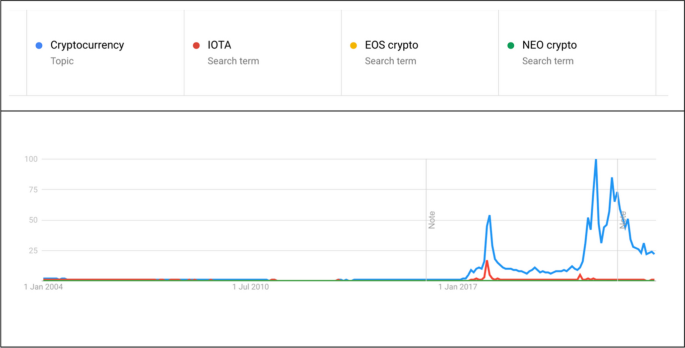
The digital finance landscape has been dramatically reshaped by the advent of cryptocurrencies, with Bitcoin and Ethereum at the forefront of this transformation. Their price movements often feel like the pulse of the digital asset world, influencing not just market sentiment but also the financial strategies of investors worldwide. In this volatile arena, the application of predictive analytics to blockchain technology emerges as a beacon of foresight, offering a glimpse into the future of these digital giants. This article ventures into the convergence of predictive analytics and blockchain, highlighting its revolutionary impact on forecasting trends in Bitcoin and Ethereum markets.
Harnessing Predictive Analytics for Bitcoin and Ethereum Forecasting
Predictive analytics represents the pinnacle of leveraging historical and current data to foresee future trends. In the realm of blockchain, where every transaction is transparently and immutably recorded, this approach finds a particularly fertile ground. By analyzing patterns in transaction volumes, price fluctuations, and even social media buzz, predictive analytics tools are offering unprecedented insights into the future movements of Bitcoin and Ethereum. This not only democratizes financial forecasting but also equips investors with the analytical tools needed to navigate the crypto markets’ turbulent waters.

The Intersection of Machine Learning and Cryptocurrency Markets
The crux of predictive analytics in the blockchain industry lies in the sophisticated employment of machine learning (ML) and artificial intelligence (AI). These technologies delve into the complex web of factors influencing cryptocurrency prices, from global economic indicators to minute shifts in market sentiment. For digital currencies like Bitcoin and Ethereum, which are subject to rapid and often unpredictable changes, the role of ML and AI cannot be overstated. They offer a dynamic and evolving framework for prediction, continually refining their algorithms with each new piece of data.
Cryptocurrency and Predictive Analytics: A Practical Application
To concretely illustrate the power of predictive analytics, consider a model designed to predict the future prices of Bitcoin and Ethereum based on a combination of historical data analysis, real-time transaction monitoring, and sentiment analysis from various social media platforms. Such a model, powered by advanced ML algorithms, could identify upcoming trends that might elude even the most seasoned traders. This capability to anticipate market movements allows investors to strategically position their portfolios, potentially securing substantial returns in the highly speculative cryptocurrency market.

Navigating the Crypto Interest Tax Landscape
An essential yet often overlooked aspect of cryptocurrency investment is the tax implications, especially concerning the interest earned on these digital assets. As crypto lending platforms proliferate, offering investors the opportunity to earn interest akin to traditional savings accounts, the complexity of crypto interest tax becomes increasingly pertinent. A thorough understanding of this domain is crucial for investors who wish to remain compliant with tax laws while optimizing their investment strategies in the cryptocurrency space.
Deciphering Market Volatility Through Predictive Analytics
Market volatility is a hallmark of cryptocurrency markets, with prices capable of significant fluctuations within short periods. Traditional financial models often fall short in predicting these movements due to the unique and rapidly evolving nature of digital currencies. However, predictive analytics, with its ability to process vast datasets and identify patterns across various indicators, offers a more nuanced approach to understanding and forecasting market volatility.
By integrating real-time data from multiple sources, including transaction histories, exchange rates, and global economic indicators, predictive models can provide investors with a more reliable basis for anticipating market shifts. This capability is invaluable for navigating the high-risk, high-reward environment of cryptocurrency investing, allowing for strategies that can adapt to or capitalize on anticipated market movements.

The Regulatory Implications of Advanced Predictive Models
As predictive analytics becomes increasingly integral to cryptocurrency trading, it also attracts the attention of regulatory bodies concerned with market stability and investor protection. The transparency and accountability offered by blockchain technology, coupled with the predictive power of AI and ML, present new opportunities for regulatory oversight.
Regulators may leverage these technologies to monitor market trends, detect fraudulent activities, and ensure compliance with financial regulations. This symbiotic relationship between predictive analytics and regulatory practices could lead to more stable and secure cryptocurrency markets, benefiting both investors and the broader financial ecosystem.
Ethical Considerations in Predictive Analytics
The power of predictive analytics in forecasting cryptocurrency trends also raises ethical considerations. The potential for data manipulation or the creation of self-fulfilling prophecies, where predictions influence market movements, necessitates a careful approach. Ensuring the integrity and transparency of predictive models is paramount to maintaining trust in these technologies and the markets they serve.
Future Directions: The Evolution of Predictive Analytics in Blockchain
The future of predictive analytics in blockchain and cryptocurrency markets is poised for significant evolution. As these technologies mature, their predictive capabilities will become more refined, offering even more accurate and timely insights into market trends. This progression promises to further democratize access to sophisticated investment strategies, previously the domain of financial institutions and professional traders.
Moreover, the integration of predictive analytics with emerging technologies such as decentralized finance (DeFi) platforms and non-fungible tokens (NFTs) could open new avenues for investment and market analysis. The intersection of these innovations will likely redefine the boundaries of cryptocurrency trading and investment strategies.

Conclusion: Navigating the Future with Predictive Analytics
The integration of predictive analytics into the blockchain and cryptocurrency sectors represents a paradigm shift in how we approach investment and market analysis. By offering a window into future trends, these technologies empower investors to make more informed decisions, potentially leading to more stable and profitable investment outcomes.
As we look to the future, the continued evolution of predictive analytics, coupled with the inherent transparency and security of blockchain technology, holds the promise of a more accessible, efficient, and secure cryptocurrency market. For investors, regulators, and the global financial system at large, the journey into this new frontier of digital finance is just beginning, promising opportunities and challenges alike.
In navigating this landscape, it is crucial for all stakeholders to remain vigilant, adaptable, and informed. The convergence of predictive analytics and blockchain technology not only heralds a new era in financial markets but also underscores the importance of ethical considerations and regulatory compliance in shaping the future of digital finance.




